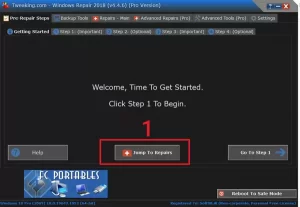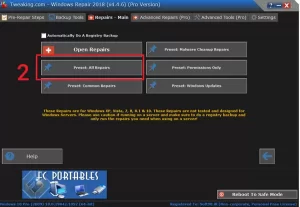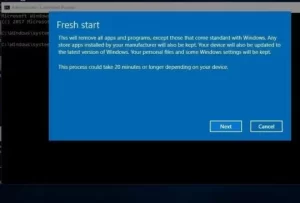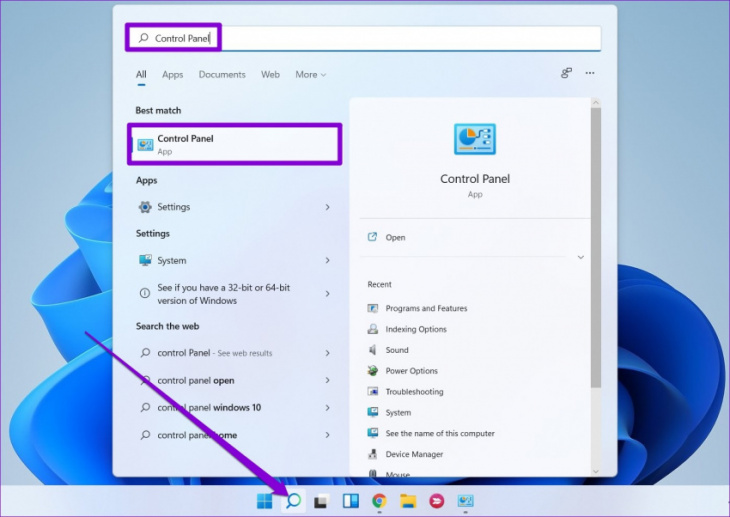7 Ways to Repair Windows 10 (and 11) with Software and without it
When something goes wrong with windows, you can Repair your windows with some basic repairs, like repairing the windows directory and the boot directory. You can apply advanced repair like System restoration if the problem is serious. For Windows 10/11, you can also use the DISM command line tool to repair Windows 10/11 images.
In the rest of this article, we will explain how to repair Windows 10/11 using the command line in five ways.
First, you need to install the software.
A very powerful and small software called Windows repair pro scans your entire System and detects and fixes all errors, problems, and defects in about half an hour!
First, boot Windows in Safe Mode (if Windows doesn’t boot). Read this guide if you don’t know how to enter safe mode.
Download and install this software from here. (preferably download the portable version that does not need to be installed). Open the program as shown in the image and click on the All repairs option.


It takes about half an hour to an hour to scan your System, and finally, a Windows restart message comes up, and you have to click Yes. After Windows is reset, your computer will work without any problems!
Now methods without installing software.
Method 1: How to repair Windows 10/11 using SFC
SFC (System File Checker) is a command-line tool that can scan Windows system files for corruption and replace any damaged or missing protected system files with a known-good version. If you encounter problems with your computer or notice problems during boot, you can use SFC to diagnose and fix the problems.
Follow the steps below to repair Windows 10/11 using SFC:
1- Open “Start,” search, select Command Prompt, and run it as an administrator.
2- Type the “SFC /scan now” command and press the “Enter” option.

If SFC can’t fix the problem, likely, this command can’t get the necessary files from the Windows image, which means it might be corrupted. In this situation, you can use DISM to repair the Windows image.
Second method: How to repair Windows 10/11 using DISM
Windows 10/11 includes a command-line tool called DISM (Deployment Image Service and Management). Windows 10/11 DISM command can repair and prepare Windows images in Windows Setup, Windows Recovery Environment, and Windows PE. In addition, DISM can be used to repair the recovery image in the operating system installation.
You can use different DISM commands to repair Windows 10/11:
- To check if there is a crash, run the command prompt as administrator, then type the following command and press “Enter.”
DISM /Online /Cleanup-Image /CheckHealth
- To scan the Windows image for corruption, type the following command and press Enter.
DISM /Online /Cleanup-Image /ScanHealth
- To repair the Windows image, type the following command and press “Enter.”
DISM /Online /Cleanup-Image /RestoreHealth /Source:repairSource\install.wim

Third method: How to reset Windows 10/11 with the command line
To reset Windows 10/11 with the “Reset this PC” option, run the following instructions:
Type “system reset -cleanup” in a command line above and press “Enter.” (If your computer cannot boot, you can enter recovery boot mode and select “Troubleshoot” and then “Reset this PC”.

The fourth method: How to run System Restore with the command line
If the problem is very severe, you can restore Windows 10/11 to the previous state as long as you enable System restore. Of course, in such a situation, documents, music, e-mails, or personal files will not be restored.
However, to run System restore in safe mode, you need to perform the following steps:
1- Start your computer and press “F8” repeatedly until the Windows advanced options menu appears.
2- Click on the “Safe Mode with command prompt” option and press “Enter.” Suppose your computer can boot normally, type “cmd” in the search box and click “Command Prompt” to continue.
3- If necessary, log in using the admin account. When the command prompt is shown, first type “rstrui.exe” in the command prompt window and press “Enter” to continue.

4- This command will take you to the System Restore user interface. You can use the recommended restore point or choose another restore point. Then, click “Next” and follow the instructions to complete the System restore.












